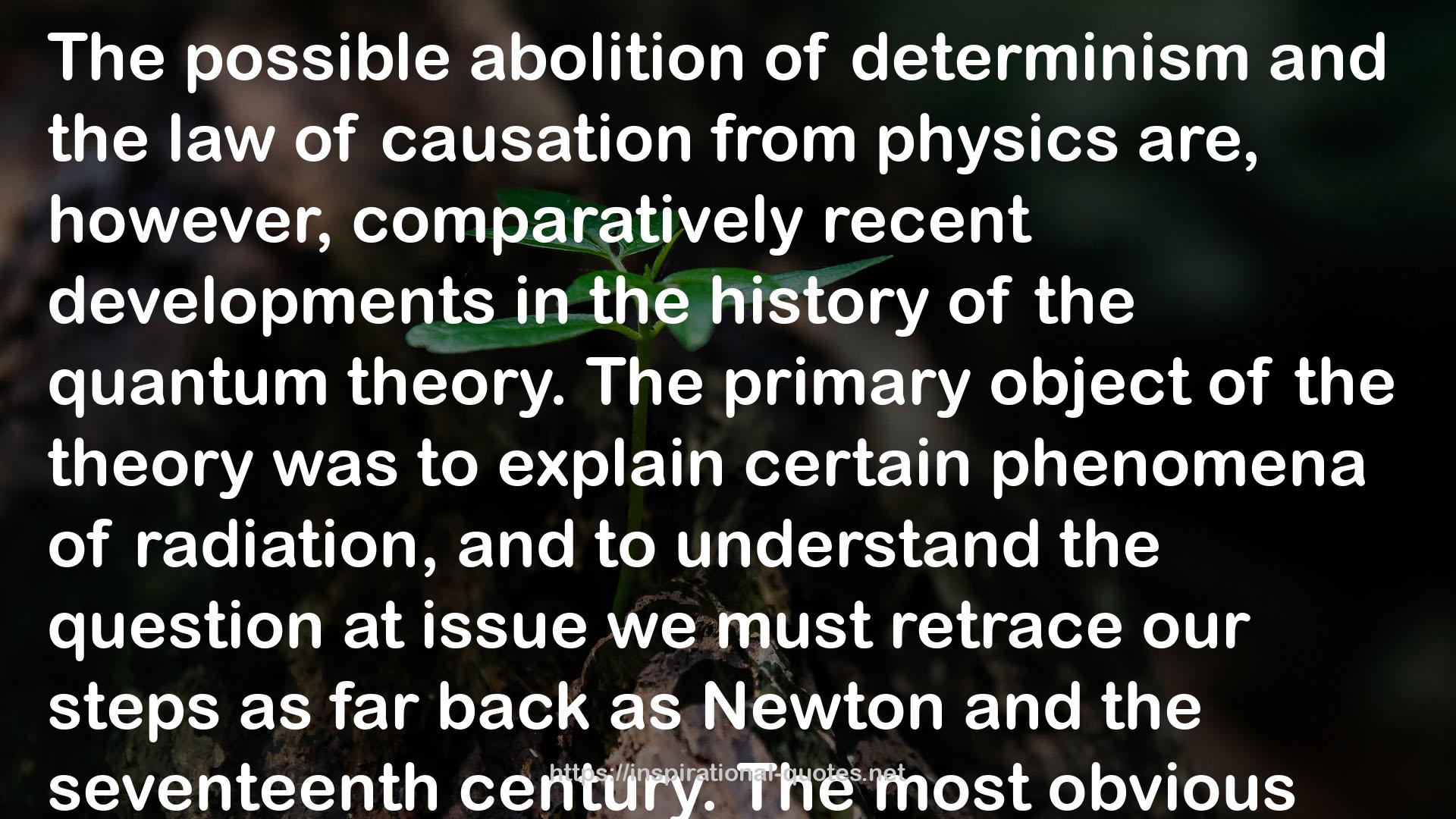" The possible abolition of determinism and the law of causation from physics are, however, comparatively recent developments in the history of the quantum theory. The primary object of the theory was to explain certain phenomena of radiation, and to understand the question at issue we must retrace our steps as far back as Newton and the seventeenth century. The most obvious fact about a ray of light, at any rate to superficial observation, is its tendency to travel in a straight line; everyone is familiar with the straight edges of a sunbeam in a dusty room. As a rapidly moving particle of matter also tends to travel in a straight line, the early scientists, rather naturally, thought of light as a stream of particles thrown out from a luminous source, like shot from a gun. Newton adopted this view, and added precision to it in his “corpuscular theory of light.” Yet it is a matter of common observation that a ray of light does not always travel in a straight line. It can be abruptly turned by reflection, such as occurs when it falls on the surface of a mirror. Or its path may be bent by refraction, such as occurs when it enters water or any liquid medium; it is refraction that makes our oar look broken at the point where it enters the water, and makes the river look shallower than it proves to be when we step into it. "
― James Hopwood Jeans , The Mysterious Universe
